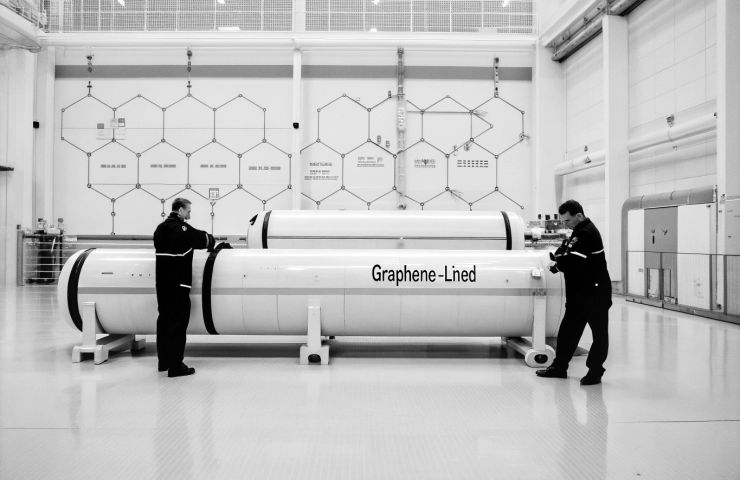Graphmatech Secures Funding for Game-Changing Polymer-Graphene Hydrogen Storage Tech
Key Ideas
- Graphmatech receives a €2.5 million EU grant to enhance their polymer-graphene hydrogen storage linings, aiming to scale up production from 5 to 200 tonnes annually.
- The graphene-based linings offer up to 83% better hydrogen containment than traditional materials, revolutionizing sustainable energy storage and infrastructure.
- Collaborating with Levidian, Graphmatech is driving towards a low-carbon hydrogen supply chain, merging the breakthrough tech with low-emissions LOOP technology.
- By 2027, approximately 1,500 commercial vehicles will be equipped with this advanced hydrogen storage tech, contributing significantly to industrial decarbonization and EU's hydrogen strategy.
Graphmatech, a Swedish materials company, has secured a €2.5 million EU grant to advance their breakthrough polymer-graphene hydrogen storage linings. The funding, in conjunction with support from the Swedish Energy Agency, is facilitating the establishment of a pilot-scale production and testing facility in Uppsala. This investment is aimed at significantly increasing production capacity from 5 to 200 tonnes per year. The innovative graphene-based linings boast a remarkable improvement in hydrogen containment, reducing leakage by up to 83% compared to conventional materials. This development is a significant stride towards enhancing sustainable energy storage and fortifying hydrogen infrastructure for the future. Notably, these linings can seamlessly retrofit into existing hydrogen tanks and pipelines without the need for extensive modifications.
The collaboration between Graphmatech and UK-based Levidian is set to leverage the strengths of both companies in driving a low-carbon hydrogen supply chain. By combining Graphmatech's cutting-edge hydrogen storage technology with Levidian's low-emission LOOP technology, the partnership aims to transition the innovation from laboratory settings to practical implementation.
A key milestone of this initiative is the anticipated deployment of the technology in approximately 1,500 commercial vehicles by 2027. This deployment is expected to play a significant role in industrial decarbonization, particularly in the transportation sector, by substantially reducing emissions. Moreover, this project aligns with the broader hydrogen strategy of the EU, providing tangible solutions for combating climate change and promoting sustainable practices.
Topics
Public Transit
Innovation
Sustainability
Energy Efficiency
Transportation
Materials
Carbon Reduction
Collaboration
EU Funding
Latest News
